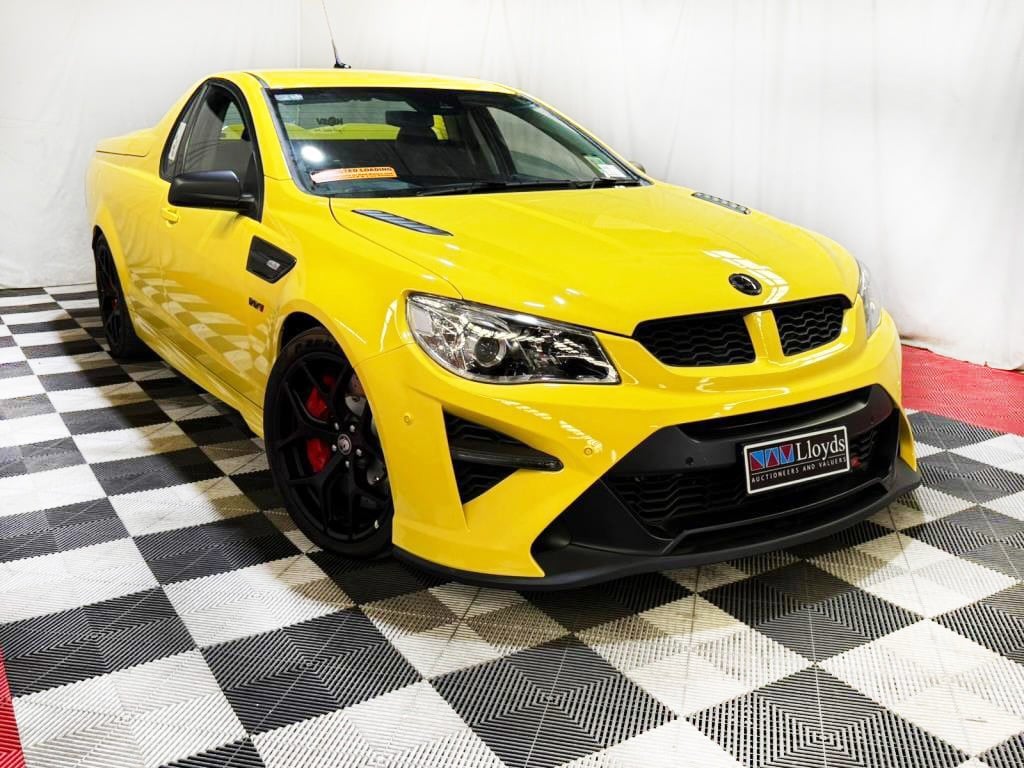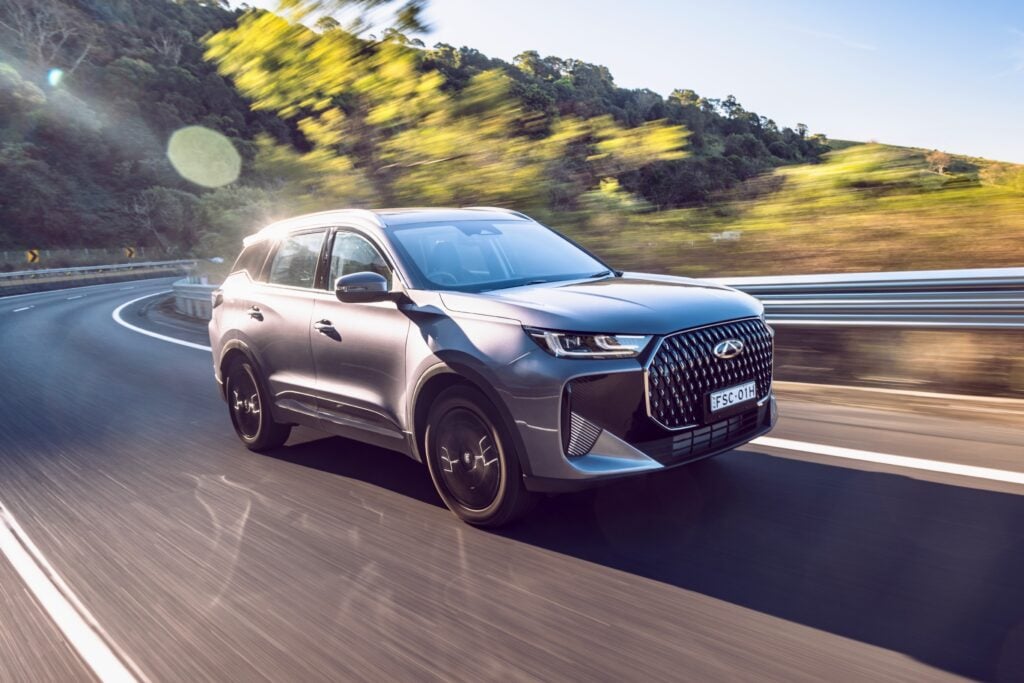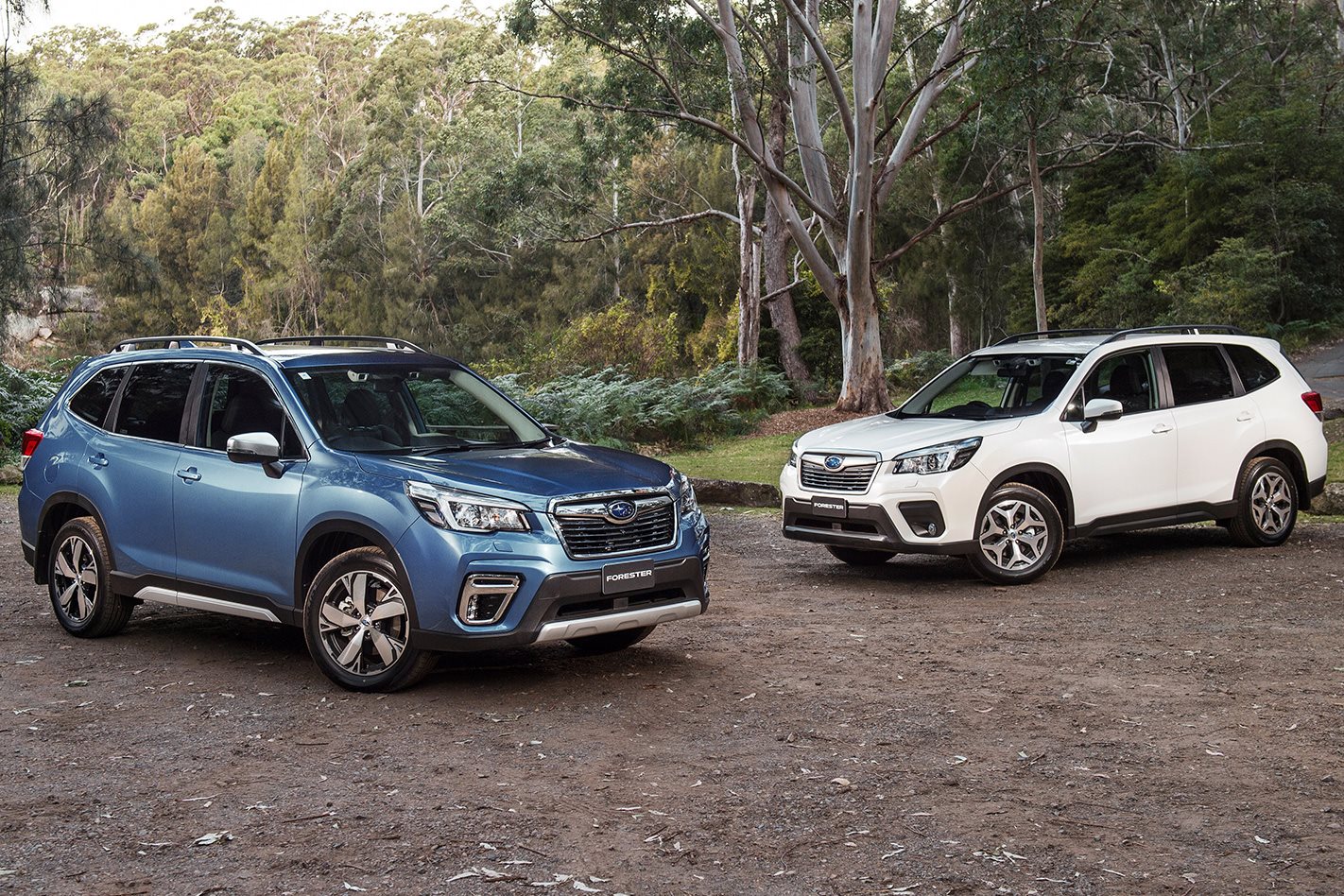
With a cursory glance, you might mistake the 2019 Subaru Forester for the version that launched in 2013 and eventually rolled out with a choice of four engines and a handful of special editions. But the mildly modified skin of the company’s all-new large SUV belies the significantly upgraded model beneath.
Kicking off from $33,490, the entry-level 2019 Subaru Forester costs $3250 more than the previous most affordable variant, but that version was powered by a 2.0-litre four-cylinder petrol engine paired with a manual gearbox.
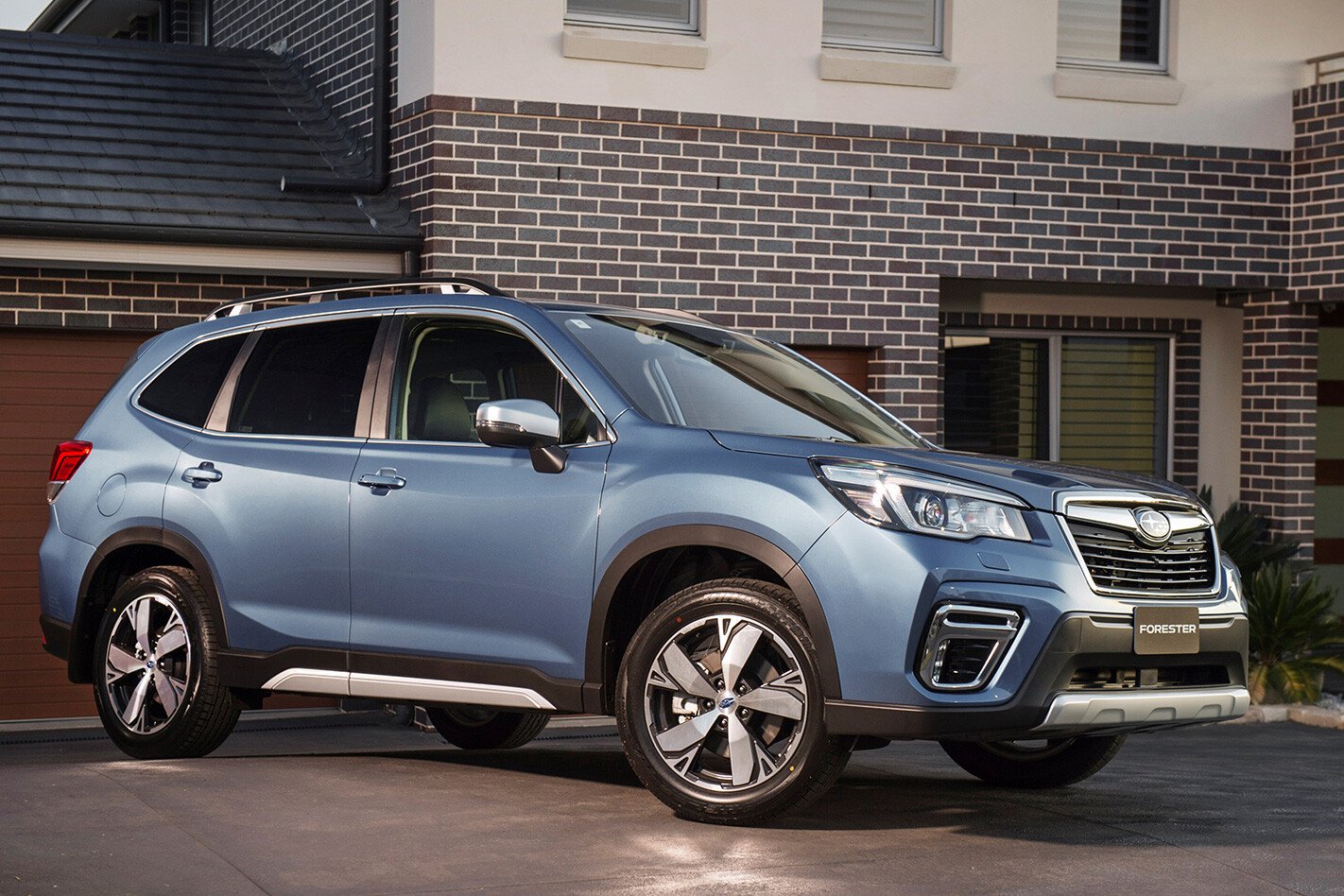
For the 2019 range, the entry Forester has a more powerful 2.5-litre four-cylinder petrol engine that sends power to all four wheels via an automatic transmission, aligning more closely with Australia’s buying habits, and representing better value.
Not only has the non-turbo 2.0-litre engine been discontinued, so has the turbocharged diesel and petrol variants of the same capacity, leaving only the non-turbo 2.5-litre for all variants. The cull has chopped the Subaru Forester line-up down from nine variants to just four.
Above the base 2.5, a 2.5i-L costs $35,490 and brings an incremental rise in equipment, as do the $38,490 2.5i Premium and range-topping 2.5i-S for $41,490. In all cases the main oily parts remain the same with the continuously variable transmission (CVT) and 136kW/239Nm shared by all four.
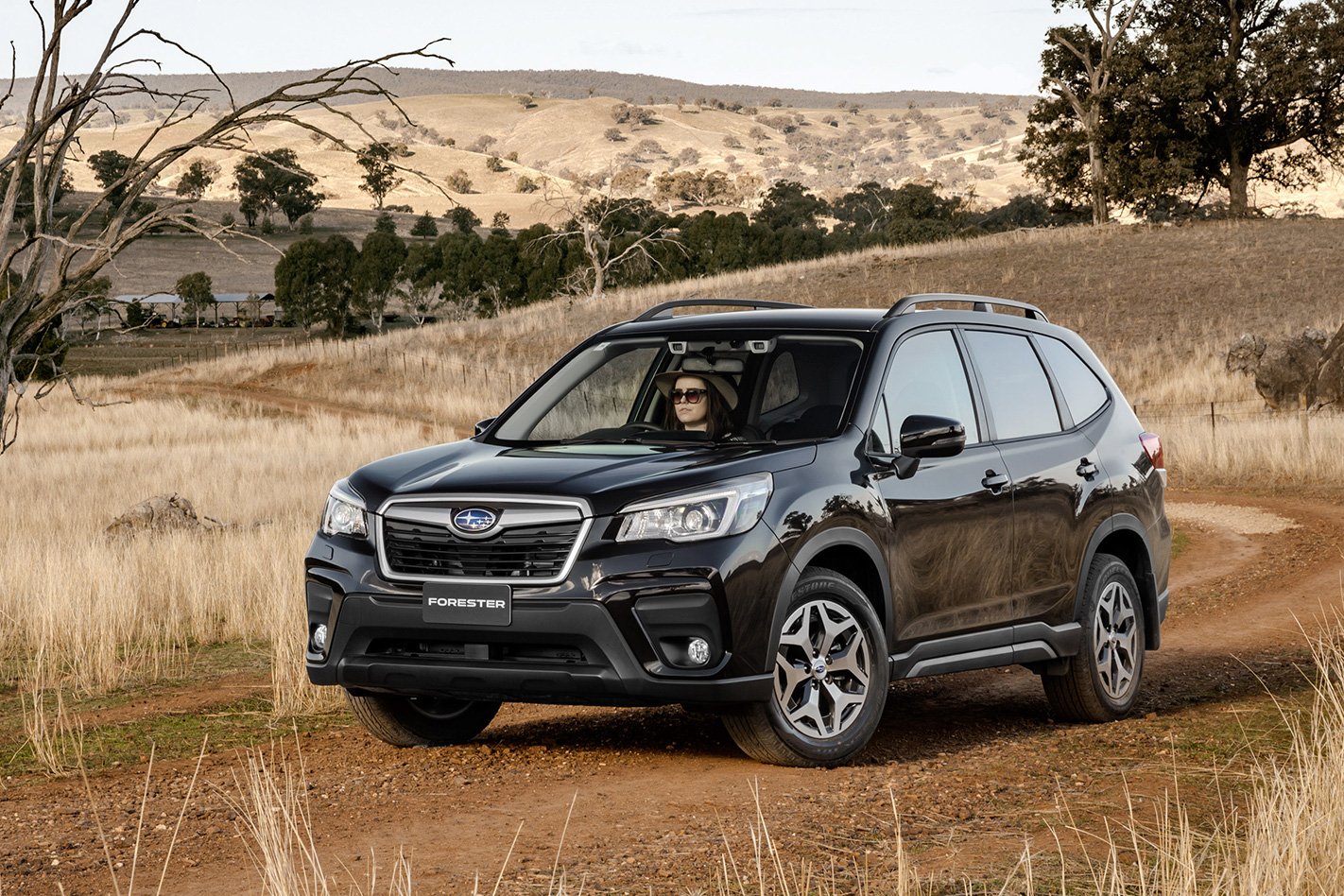
Headlining technological changes for the 2019 range is a new driver recognition system, which is standard fare for all versions except the base Forester.
A camera concealed in the dashboard, scans the driver’s face as they enter the vehicle and establishes their identity if they have previously saved one of three user profiles. On recognition, the Forester moves the electrically adjustable seat and mirrors to the desired position, sets the customisable displays and climate contra to the previous setting, and welcomes the user with a greeting in the central screen.
Beyond the convenience advantages of the system, it continues to monitor the driver during a journey and can identify if they are becoming drowsy or distracted, and issues an audible and visual warning.
The high-tech safety feature is complemented by Subaru’s unique EyeSight stereoscopic camera system, which monitors the road ahead with a pair of cameras – also standard for all Foresters. Not only does the hardware support adaptive cruise control and lane departure warning, it also enables autonomous emergency braking.
For all but the base Forester, a system similar to AEB is also applied when reversing but uses the rear parking sensors to apply the brakes if the driver fails to see an object in the mirrors or reversing camera, including pedestrians or children walking behind the vehicle, for example.
Housed in the subtly redesigned front end, LED headlights are now standard for all, projecting a higher-intensity light for greater safety at night. The more advanced lights feature steering responsive beams which follow the direction of the vehicle. Opt for the 2.5i-S and you’ll get LED fog lights as well.

With another cursory glance, the 2.5-litre engine may appear identical to the non-turbo version that powered two variants of the previous range, but Subaru says 90 percent of its components have been ‘revised’. The result is an increase of 10kW, 8.0 percent better acceleration and an 8.6 percent improvement to fuel economy (7.4 litres per 100km).
Like all Subaru models except the BRZ sportscar, the Forester is permanently four-wheel drive, and the company’s X-Mode traction management system is there for optimum grip from all four tyres.
For the flagship variant, a Snow/Mud setting offers maximum traction on the loosest surfaces by allowing moderate wheel slip, although the same effect can be achieved by manually deactivating traction control in more affordable variants. The 2.5i-S also displays vehicle incline and roll angles in the upper central screen when switched into X-Mode.
The new Forester has three full-colour digital displays. A main touchscreen measuring 8.0 inches for Premium and S variants with navigation, or 6.5-inch for the entry versions offering a range of applications including smartphone mirroring. It’s complemented by an upper 6.3-inch Multi Function Display screen and a 4.2-inch screen between the driver’s gauges for displaying vehicle and trip information.
Compared with the outgoing Forester, the Lineartronic automatic transmission is essentially the same unit but, like the engine, it has been revised. The changes have reduced weight and boosted efficiency, while the operation has been made more similar to a conventional automatic transmission with seven simulated gears that can be selected with the steering wheel paddles.
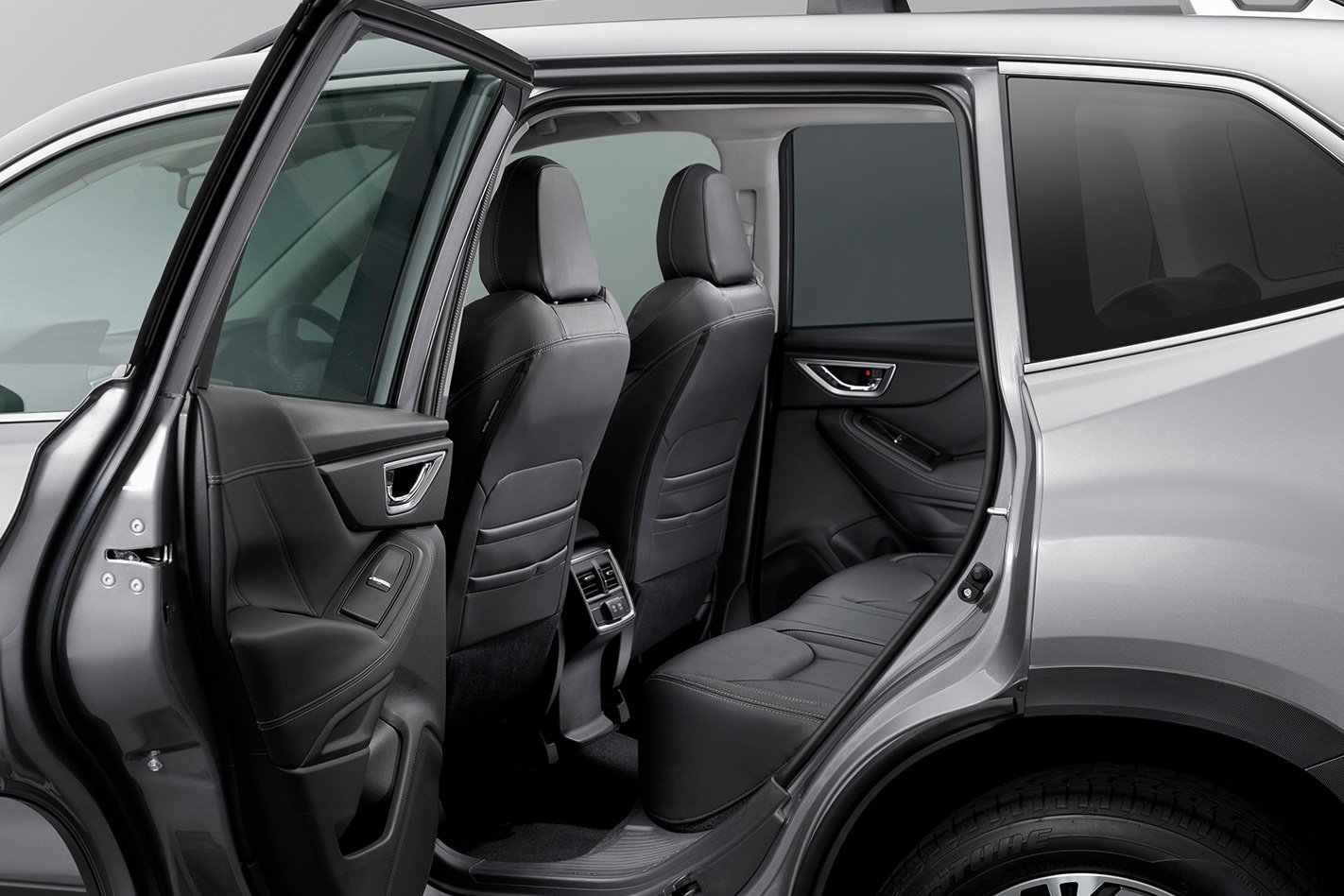
The Forester is the third model to be launched in Australia that uses Subaru’s Global Platform, following the XV and Impreza. The new construction has resulted in a stronger and safer car with better driving attributes, says its maker. Despite its larger proportions and extra technology, the 2019 Forester has only gained a little weight, increasing by as little as 15kg in the case of the S, or 26kg for the entry version.
The larger proportions offer more space for occupants in both rows of seating as well as a bigger load area. Cargo space height is up by as much as 35mm, a 55mm increase to the boot floor width takes the widest point to 1585mm and the wider boot opening measures 1300mm. Boot volume is 498 litres but can be expanded by 60/40-split folding rear seats, and a flat step at the edge or the rear seats enables easy loading of roof storage.
A power tailgate for Premium and S is now twice as fast to open and close, and incorporates a close and lock button, allowing users to walk away from the vehicle without having to wait for the boot to close before locking.
Notable features for the most affordable Forester include new rear air vents and a pair of USB sockets for second-row passengers, stereo system by renowned audio manufacturer Harman Kardon, three 12-volt power sockets, rain-sensing wipers, auto-dipping headlights, tyre pressure monitoring, rear cross-traffic alert, electric park brake and 17-inch ally wheels.
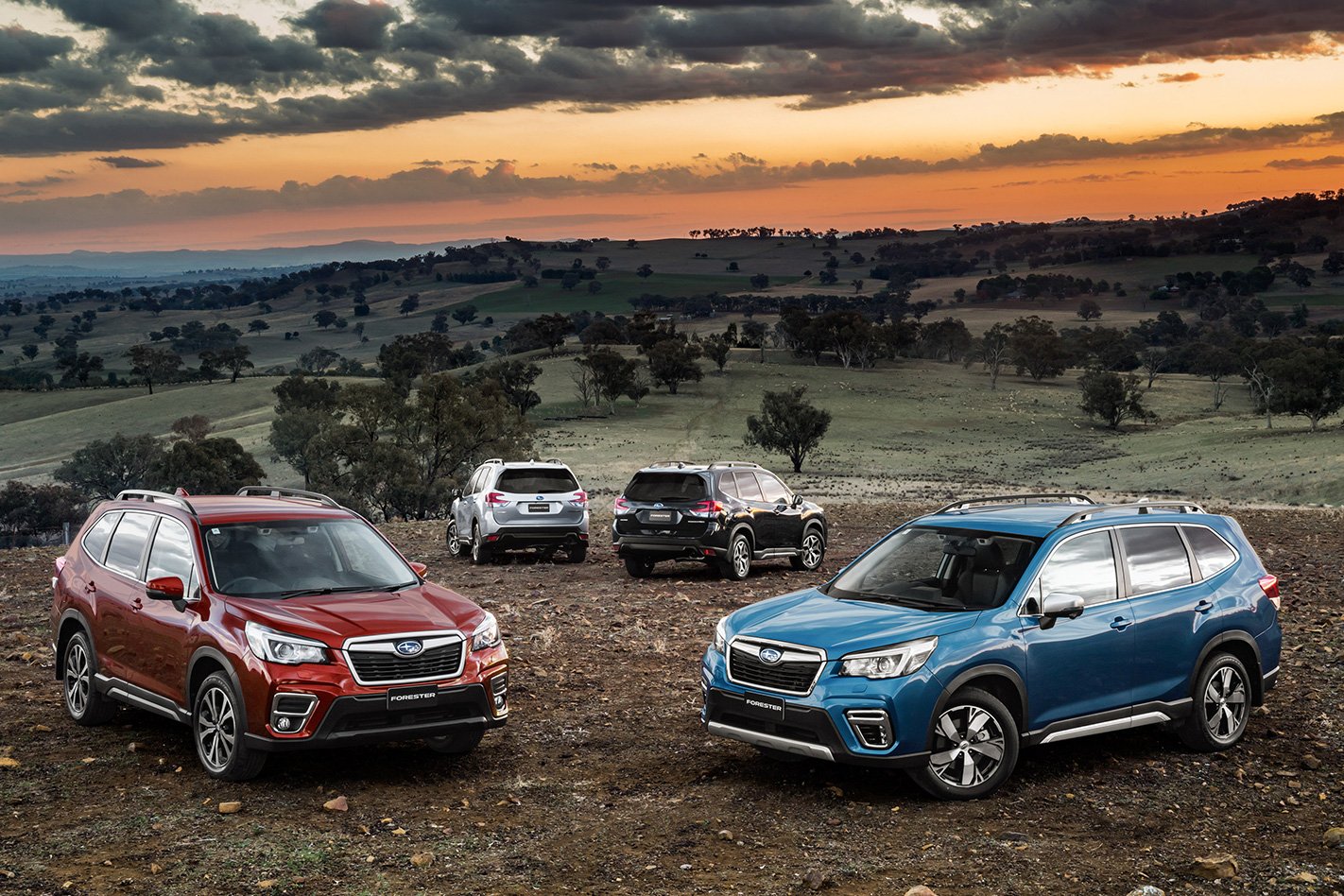
The 2.5i-L adds to that list with the aforementioned Driver monitoring System and the vision assistance systems that add rear emergency braking and adaptive beam headlights.
Above that, the Premium brings electric operation for the rear folding seats, a selection of alloy and chrome-look trims inside and out, power folding mirrors, navigation, an SI-Drive mode that allows the engine characteristics to be adjusted, power adjustable front seats and 18-inch alloy wheels.
The flagship tops off the kit list with an electric sunroof, higher specification sound system, leather upholstery in a choice of black or ‘platinum’, and a selection of more premium appearance and texture interior and exterior materials.
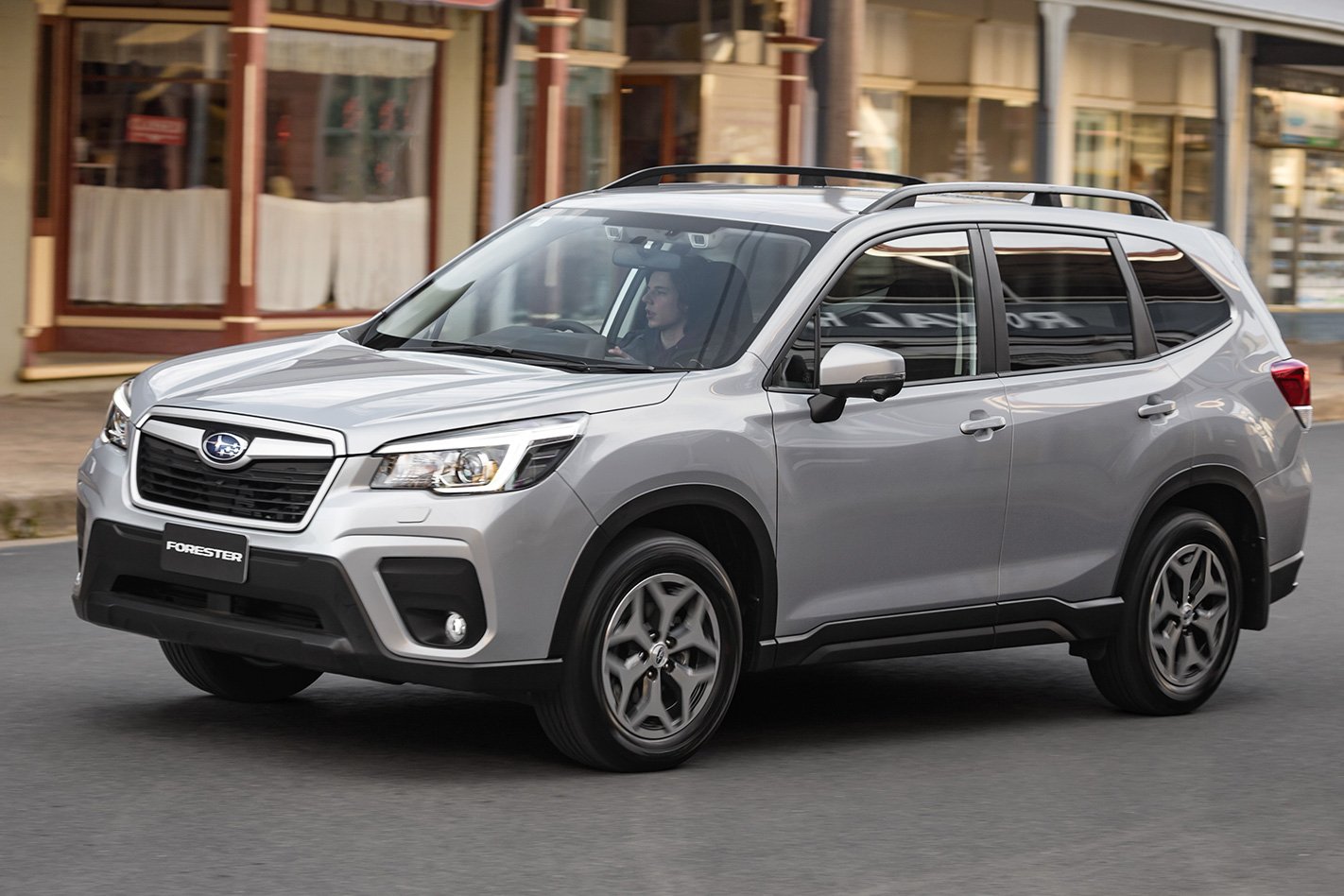
Unlike some luxury brands which offer extensive options lists that can significantly add to the bottom line, there are no extras on offer to pump the price of the Forester. Even the nine choices of metallic and pearlescent paint are included in the asking price.
A three-year unlimited kilometre warranty is included along with a 75,000km capped price servicing program and roadside assistance.
MORE: Subaru Forester Range Review MORE: Subaru Forester Specs, Range & Price



